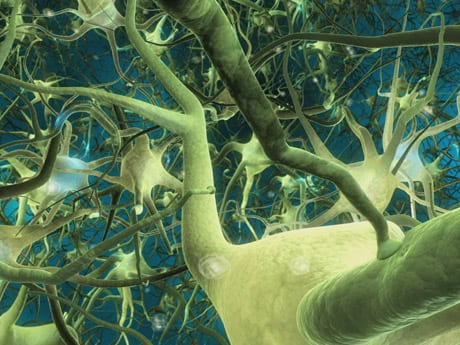
As a graduate student, I'm fortunate enough to dictate my own work hours. However, with this freedom comes expectations of productivity; I must juggle writing manuscripts, mentoring students, applying for grants and conducting my research. Amidst these tasks, I inevitably find the time to toggle between the 30-something tabs on my internet browser, scroll through social media pages on my computer and phone, chat with coworkers in the hallway and promptly respond to emails of varying importance. As the minutes and hours escape out of my day like air out of a punctured tire I find myself asking “wait, what was I doing again?†more than I care to admit.
Oftentimes, when we're performing multiple tasks at once, we use the term “multitasking.†However, a commonly overlooked but similar concept, “task-switching,†refers to switching your attention serially from one thing to another. Even more recently with the expansion of technology and social media, researchers are beginning to evaluate “media-multitasking,†as a specific form of multitasking and task-switching which involves the use of media on digital devices.

Interestingly, the word multitasking was originally used in the field of computer science in reference to the ability of computers to process tasks simultaneously. It has since been adopted by the field of cognitive psychology to explain how the brain processes information. Essentially, much of the existing knowledge on multitasking and task switching is constructed from researchers' perception of the human mind, in particular our prefrontal cortex, as a computer. Within this framework, psychologists still debate the mechanics of how tasks involving conscious attention are processed in the brain. While they're beginning to understand how different processing methods may be advantageous in certain situations, more often than not the research shows that multitasking and task switching come at a cost to productivity.
One phenomenon in particular that seems to naturally extend from media-multitasking and task-switching, coined by Linda Stone in 1998, is continuous partial attention (CPA). CPA refers to the state of being constantly alert and connected within our social and professional network. Unfortunately, that nagging compulsion we feel to never miss an email, text or relevant social media post is killing our productivity. It may seem perfectly harmless to respond to your email or scroll through Twitter periodically while you work, but once you switch from one task (or screen) to the next, no matter how short the distraction, your brain still needs a few seconds to catch up before getting back on task. This extra time is aptly named “attention residue,†and it can really add up. Attention residue has been estimated to amount to upwards of 40% of your daily productivity. Research has also shown that it takes on average 13 minutes and 15 seconds to get back on-track after a distraction.
What if I'm the exception to the multitasking dilemma? Probably not, since < 3% of people are considered “supertaskers.†The rest of us really need to consider the costs of both multitasking and task switching. According to Stanford psychology professor Clifford Nass, media multitasking is correlated with an inability to filter out irrelevant information, reduced memory, and trouble managing emotions. And when we do perform well, it's oftentimes because we're overcompensating for the crunched time and experiencing additional stress in the process.
But it's not all bad. Under the pressure of a deadline, or after engaging in divergent thinking, people may incur less of a mental penalty for multitasking. Research has also shown that certain physical tasks, such as exercising on a stationary bike, pair well with other cognitive tasks, like solving the Stroop Color Word test; in fact, engaging in both may actually boost your physical performance (e.g. biking speed)!
So maybe it's time to put down the devices, take a breath and consider how our brain handles all of the tasks and stimuli we throw at it during the day. Recently I've spent a lot of time thinking about how to “Marie-Kondo†my time management in graduate school. Some of the tools I'd like to try include the Pomodoro method, batch tasking, Screen/Life Balance and the 40:20 method. A good first step may be to ask yourself when you feel most productive (for me it's in the early morning); try blocking out time during that window to practice multitasking mindfulness. You can also use a productivity app like Stay Focused to block specific websites during that time. But why stop there? The world is full of helpful productivity blogs, apps and literature; if you manage to escape the information rabbit hole you too can be on your way to becoming a clear-headed productivity machine.
Featured image: Braintrippin'. Image Credit: Vittorio Cravino via Flickr. Licensed under CC BY-NC 2.0.
About the Author
Rebecca Atkins is a Ph.D. student in the Odum School of Ecology studying. She is passionate about coastal ecology and is currently studying the effects of temperature on snail populations across Atlantic US salt marshes. In her spare time, she pursues art, weight lifting and drinking copious cups of local coffee. You can email her at Atkinsr@uga.edu or follower her @RL_Atkins
- Rebecca Atkinshttps://athensscienceobserver.com/author/rebecca-atkins/March 25, 2021
- Rebecca Atkinshttps://athensscienceobserver.com/author/rebecca-atkins/February 17, 2021
- Rebecca Atkinshttps://athensscienceobserver.com/author/rebecca-atkins/February 20, 2020
- Rebecca Atkinshttps://athensscienceobserver.com/author/rebecca-atkins/December 4, 2019








